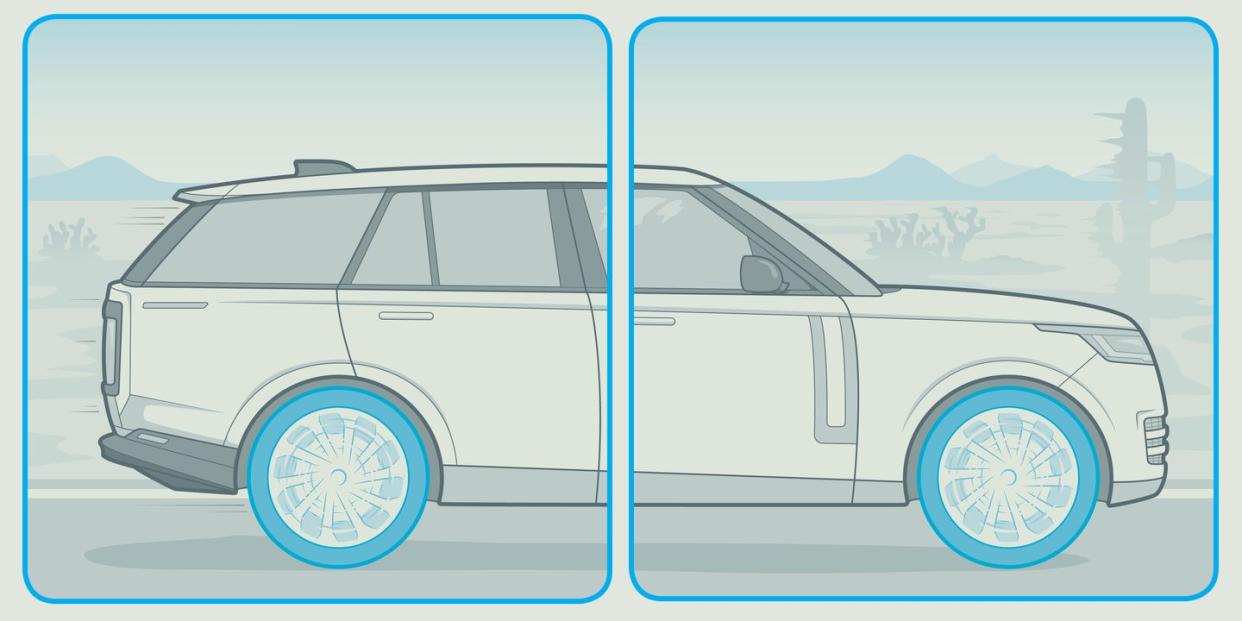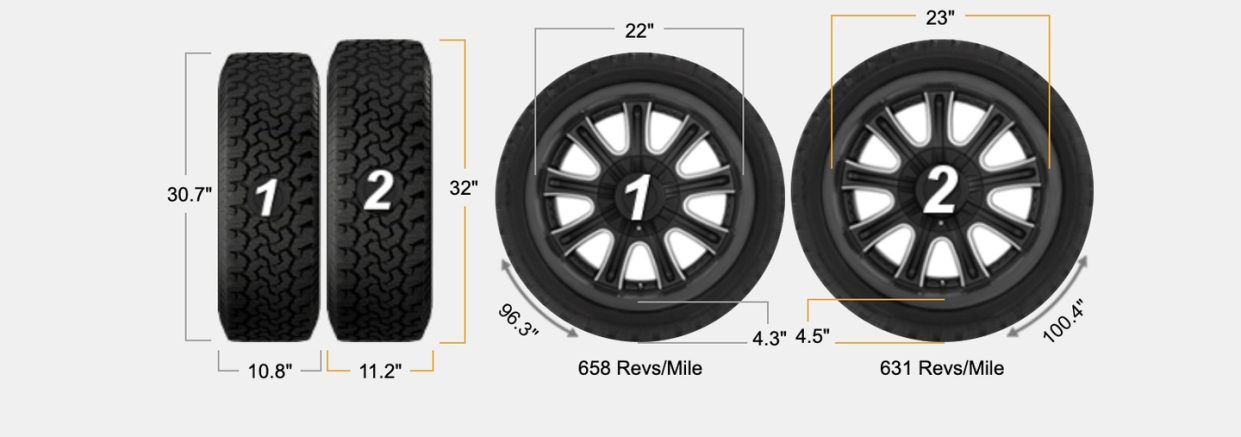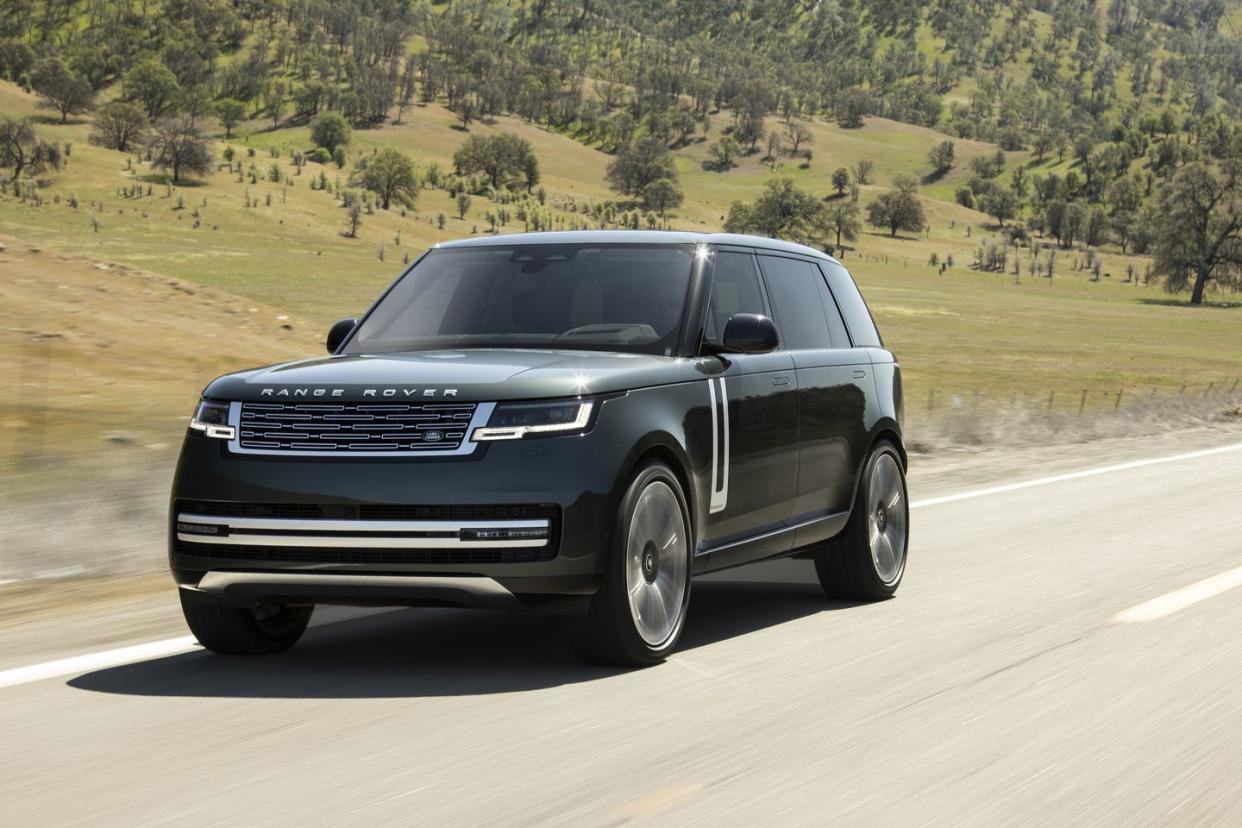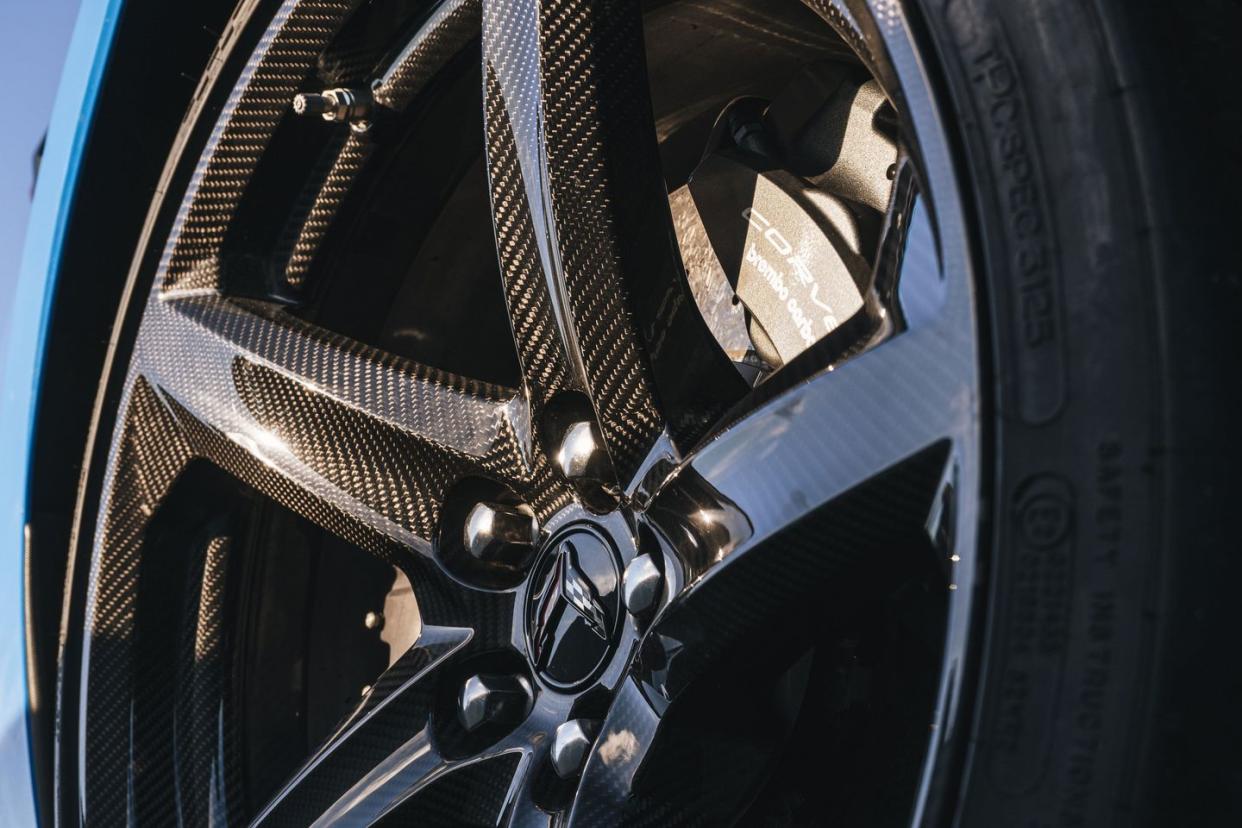Why You Don't Really Need to Worry About Big Wheels and Unsprung Weight

Weight is the enemy. In cars, saving weight means more speed, better handling, better ride, and increased efficiency, and while all automotive engineers will try and save a gram wherever they can, not all weight is the same. Unsprung weight is an area of great focus among enthusiasts. The term collectively refers to the weights in a car not controlled by its spring, including the wheel, tire, brake system, and hub. Suspension components like control arms are considered "semi-sprung" as they are sprung on one side, while everything else in a car is considered sprung weight.
Reducing unsprung weight means less work for a car's springs and shocks to do to keep the tires in contact with the road. A car's unsprung weight has to follow the road surface, and it has to do so quickly so as not to transmit unwanted forces into the body and cause tires to lose contact with the road surface. Over the years, engineers have devoted much energy to reducing unsprung weight. It's why we went from wire, to steel, briefly to magnesium alloy, to aluminum-alloy wheels, and in some very high-end cars, carbon-fiber wheels. Yet, automotive wheels have gotten bigger over the years. As cars grow larger, designers—and consumers—want the wheels to grow commensurately to keep everything in proportion. So we've ended up in a world where most Honda Civics come equipped with 18-inch wheels, and most Porsche 911s are sold with 20s up front, 21s in the back

Back in 2021, I attended a preview event for the new Range Rover, and the team behind it was very proud of its 23-inch wheels. I was skeptical. Wheels have a huge effect on ride quality in both their unsprung weight and how wheel size dictates tire size. If a car offers two wheel sizes, generally, the larger wheel is paired with a shorter tire sidewall, and thus, a stiffer overall tire. I approached Jaguar Land Rover's chief engineer Nick Collins with skepticism, expecting (and perhaps hoping) he'd quietly tell me that he didn't want the 23s, it was a design-team victory, and that you should just buy the smaller wheels. Except, he basically said not to worry about it. The old Range Rover offered 22-inch wheels wrapped with 275/40R22 tires, while the new 23s come on 285/40R23s. Not only did the aspect ratio—the proportion of sidewall height to total tire height, which in this case is 40 percent—stay the same but the actual sidewall height itself was increased from 4.3 to 4.5 inches.
What about the increased unsprung weight with larger wheels. As Keith Tanner at Flyin' Miata explains in this great video, unsprung weight is best understood as being a function of a vehicle's total weight. Let's do a silly thought experiment: If you could take a Range Rover's 23s and put them on a Miata, the resultant huge increase in unsprung mass would transfer a lot of energy into the sprung mass as the tires moved along a road source. But a Range Rover weighs nearly a ton more than a Miata, so all its unsprung weight doesn't make nearly as much of a difference.
Still, Land Rover does concentrate a good deal on unsprung weight reduction. George Sherrey, chief engineer for chassis commodities at Jaguar Land Rover, tells R&T over email that new manufacturing processes mean that the 23s of the new Range Rover weigh about the same as the 22s of the old car, depending on the specific wheel. JLR also uses aluminum extensively in suspension components, and in the case of the Range Rover, two piece brake discs to save weight. Ultimately though, he says what's most important is that ratio of sprung to unsprung mass.
Collins was right, I had nothing to worry about. The new Range Rover floats above the road surface as you'd expect, and my colleague Travis Okulski, who recently drove a new Range Rover Sport on 23s, felt the same way.
I think where people get confused is from the conventional wisdom around tire sizes. If on your car, you switch to a larger aftermarket wheel that's much heavier than stock, it will likely have a big negative effect on ride both because of the increase in unsprung weight and because of the possible decrease in tire sidewall size. However, if you're building a new vehicle from the ground-up, as Land Rover did with the new Range Rover, you can do things like increasing the overall tire size so ride quality doesn't take a hit as wheels get bigger.

It's also worth mentioning that a car with a lot of sprung mass needs a lot of damping overall, further reducing the impacts of unsprung weight. The Range Rover also has air springs and a clever application of electric anti-roll bars, so it's got a lot of hardware to ensure its ride is as luxurious as its customers demand. It's not just the Range Rover either. A lot of luxury cars have similar systems, and in performance cars, a lot of work is put into managing unsprung weight and short tire sidewalls.
"Wheels get bigger, aspect ratios get smaller, but we have the tools to manage it," says Jim Mero, the former ride-handling engineer for Corvette. "It's not only the damping, it's the architecture, managing those loads. Structural stiffness, bending moments, torsional stiffness. And then the geometry of the suspension, being able to separate fore-aft loads and lateral loads is huge."
Over the years, the Corvette has increased its wheel size, and with that came a reduction of tire sidewall height. The C6 ZR1 was one of the first production cars to use a 25-profile rear tire, and various C7 variants and the C8 Z06 all do the same. Yet, these cars ride very well especially considering their enormous performance potential.
An engineer who requested not to be named recently told me that unsprung weight matters, though in the real world, tire stiffness has a much more noticeable effect on ride and handling. With unsprung weight, the goal is really to keep the proportion of a vehicle's unsprung weight and sprung weight in check. It's not to say that unsprung weight doesn't matter. Indeed, reducing unsprung weight means better damping control, which in turn increases a tire's contact patch, and thus grip. At this point, though, we're getting into the realm of track cars, and why carbon-fiber wheels are offered on high-performance models from Ford, Chevrolet, and Ferrari.

Wheels may be getting bigger, and with that, unsprung weight, but generally speaking, the average passenger vehicle is gaining plenty of weight, too. Cars are multivariable systems, where everything affects everything. Nothing happens in a vacuum, and if the overall unsprung weight increases generation over generation, it's not really a big deal if the proportion of unsprung to sprung mass stays similar. Engineers know that unsprung weight matters, but they also know that you have to look at a car as a total package.
Everything in automotive engineering is a compromise, everything is part of a bigger system. A holistic approach is why Chevy can get a great ride out of a Corvette with 20-inch rear wheels and 25-profile run-flat tires—about as stiff a tire as you'll ever see on a road car—and why Land Rover can make a car on 23s seem plush.
You Might Also Like
